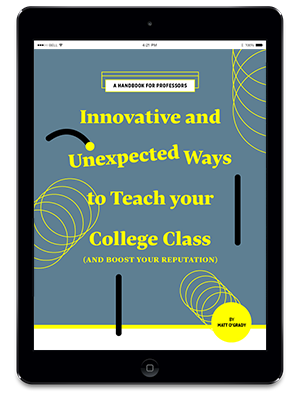Student engagement and classroom participation—the two things every smart prof is after. Over the last 10 years, classroom response evaluation tools have emerged as the best way to get a handle on these two seemingly elusive targets, and they’ve evolved in notable ways. The most dramatic change is the transition from hardware, like iClicker and Turning Technology transponders, to software, like mobile apps that can be downloaded to personal devices. The marketplace for these mobile platforms is getting more and more crowded, so how do you, as a prof or an administrator, decide which system is best? Here are a few things to consider:
1. Cost to students. There are a lot of software systems being used across campuses, and most are competing to be the cheapest. Which makes sense: for faculty, a low financial burden to students must be top of mind. But what’s the time-management cost of students buying and operating multiple subscriptions to different systems? One platform used consistently across a campus, even if the initial cost is slightly higher, makes the best solution.
2. Ability to plug’n’play. It’s crucial to select a company that knows how to roll out its platform at the institution level. So how do you assess whether any given platform has this capability? Here are some questions you should ask the company pitching you the latest evaluation tool:
a) Do they offer vertical integration with your current learning management system, authentication systems, etc.? The last thing you want is to ask your students to create another new account. User authentication, or single sign-on, which means students use the same account for multiple systems, is essential.
b) Do they offer training sessions to get profs and students quickly up to speed? Make sure the company has a detailed plan to train faculty members quickly, efficiently and effectively. How will your current content be transitioned to the new platform? Will the training be conducted online or in person? Will there be a named resource within the platform’s organization or will you be relying on a general support function?
c) What’s the scalability model? Has the company successfully implemented their system on a large scale? You want a company that can nimbly move from servicing a handful of profs to hundreds in a short period of time, if needed.
d) What’s their uptime record? In other words, how often and for how long over the past 12 months has the system been down, inaccessible or unusable? Here you’re asking about the reliability of the platform and how they handle periodic updates and maintenance. It’s imperative that you choose a stable system so you don’t waste valuable time fighting with a faulty (or non-functioning) platform in front of a classroom of students.
3. Alignment with your strategic plan. This is the big picture question. What are your goals for your classroom response system, and how are these addressed in the new system’s roll-out plan? For example, are you trying to get more people using technology? Is this a part of a larger student success plan? Are you simply looking for a low-cost polling option? Basically, you’re deciding whether the platform needs to perform like a Tesla or a Car-2-go—both, ultimately, will get you where you need to be but in different ways. What you want is a platform that can function at multiple levels, and evolve as your institution’s needs and goals change. One that performs to meet your needs now, but will continue to perform in the future.

Find out more techniques and ideas to accelerate learning in your class in our free guide, Innovative and Unexpected Ways of Teaching your College Class.
Related pages
Learn more about Top Hat’s classroom tools
Learn more about Top Hat’s classroom polling app


